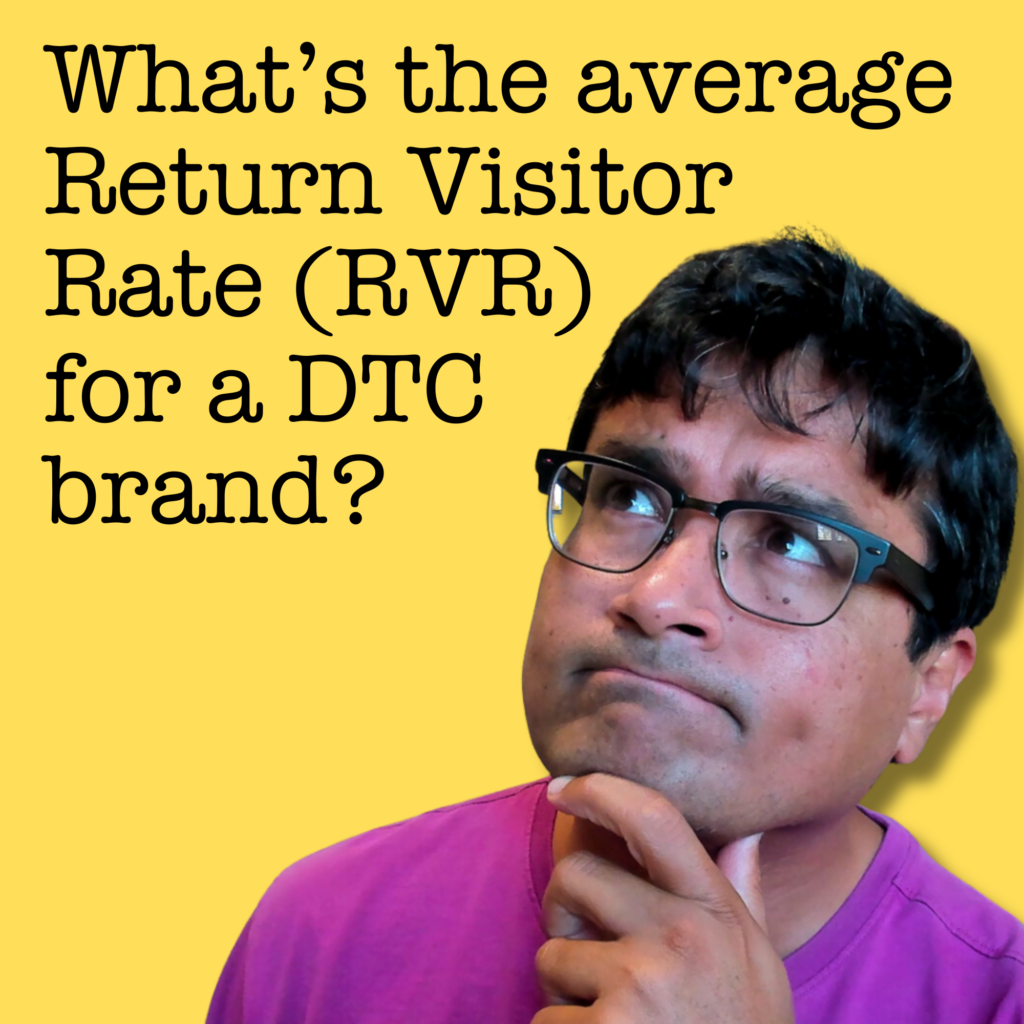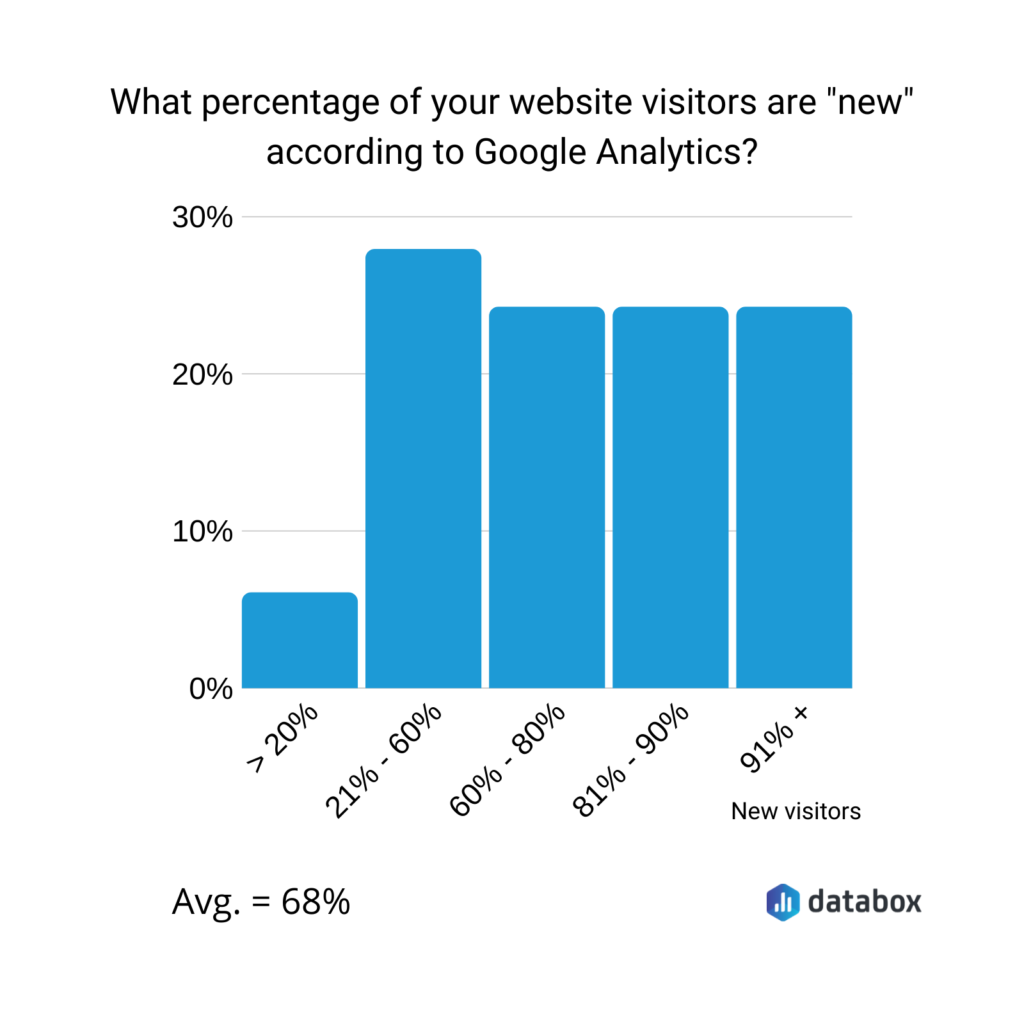Blog
Average Return Visitor Rate (RVR) for DTC and Why It Matters
Over the years, I’ve done a lot of Google searches for phrases that relate to helping me find a number for the acceptable visitor return rate for an eCommerce website.

I have tested dozens of permutations and combinations of this search term.
The best data I have found was not even about the Return Visitor Rate (RVR) for DTC was actually for the opposite: new visitors to a website.
Databox surveyed marketers. They found that, on average, 68% of site visitors are new visitors (source).

Working backward, you will find that the calculated return visitor rate would be 100% minus the number shown by the Databox survey, which is 64%.
Giving a return visitor rate—or RVR—of 36%.
I have been working on conversion optimization for e-commerce businesses for the last 14 years, and I can tell you that a return rate of 36% is astronomically high. I have never encountered it on a client website.
The typical return rate I see on my client sites is between 15% and 22%.
Does This Metric Even Matter?
if you are a marketer who is trying to reduce your ad spend or increase your return on ad spend (ROAS), then this average Return Visitor Rate (RVR) for DTC does matter. It sheds light on the fact that most visitors to a website never return.
Add to this the fact that pay-per-click (PPC) advertising converts at a rate of 2.35% (source), and you start to see why this is a problem.
This makes it clear that we need to build a conversion strategy that is singularly focused on driving conversions on the first visit.
The Frictionless Commerce Method
Over the last 14 years, we have run hundreds of experiments to combat this low average Return Visitor Rate (RVR) for the DTC problem.
Here’s what we have discovered.
Site visitors can be grouped into three buckets: those who are currently buying (the money makers for the brand), those who are interested but not convinced, and those who can’t be convinced.
We specialize in converting the middle group (who are interested but not convinced). At this stage, we have a two-step problem:
Step 1: Identify these people who are interested but not convinced.
Step 2: Figure out what we need to tell the audience in order to get them to buy.
You can find details about this methodology, along with case study evidence, here.



